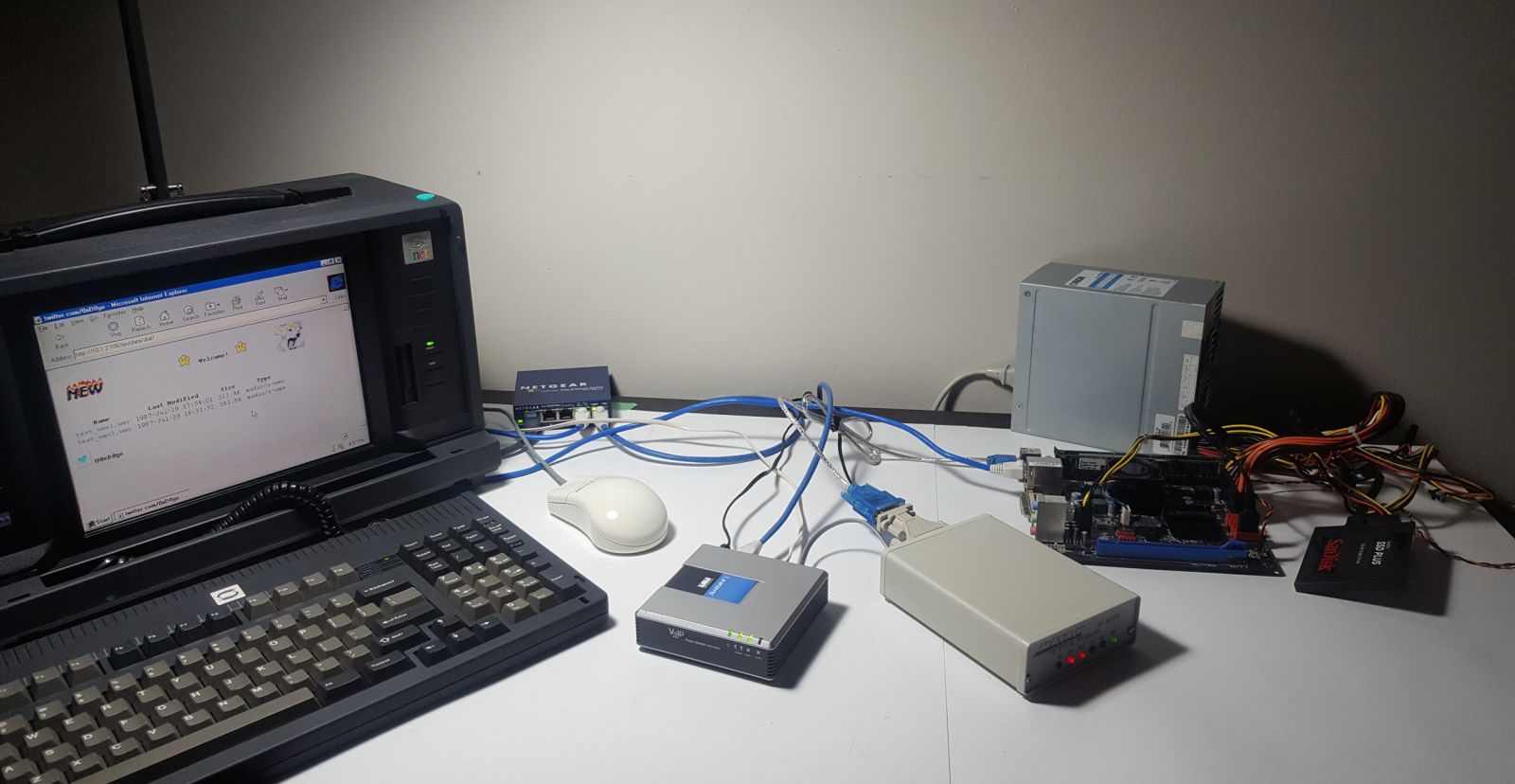Trying to connect an old, dial-up–compatible computer to modern-day broadband internet can be a chore. The new tutorial by Doge Microsystems walks you through the process of using a Raspberry Pi to bridge the gap.
The Sound of dial-up Internet
I was bored so I wanted to see if I could get free dial up internet so I found that NetZero still has free service so I put in the number and heard the glorious sound of the Dial-up. Remind me of years gone. Unfortunately I was not able to make a connection.
Dial-up internet
Ah, there really is nothing quite like it: listen to the sweet sound of dial-up internet in the video above and reminisce about the days of yore that you spent waiting for your computer to connect and trying to convince other members of your household to not use the landline for a few hours.
But older computers have fallen behind these times of ever faster broadband and ever more powerful processors, and getting your beloved vintage computer online isn’t as easy as it once was.
For one thing, does anyone even have a landline anymore?
Enter Doge Microsystems, who save the day with their Linux-based dial-up server, the perfect tool for connecting computers of yesteryear to today’s broadband using a Raspberry Pi.
Disclaimer: I’m going to pre-empt a specific topic of conversation in the comment section by declaring that, no, I don’t like the words ‘vintage’, ‘retro’, and yesteryear’ any more than you do. But we all need to accept that the times, they are a-changing, OK? We’re all in this together. Let’s continue.
Building a Raspberry Pi dial-in server
For the build, you’ll need a hardware modem — any model should work, as long as it presents as a serial device to the operating system. You’ll also need a Linux device such as a Raspberry Pi, a client device with a modem, and ‘some form of telephony connection to link the two modems’, described by Doge Microsystems as one of the following:
We need a way to connect our ISP modem to clients. There are many ways to approach this:
- Use the actual PSTN (i.e. real phone lines)
- Use a PBX to provide local connectivity
- Build your own circuity (not covered here, as it would require extra configuration)
- Build a fake PSTN using VoIP ATAs and a software PBX
I’ve gone with the fourth option. Here’s the breakdown:
- Asterisk — a VoIP PBX — is configured on the dial-in server to accept connections from two SIP client accounts and route calls between them
- A Linksys PAP2T ATA — which supports two phone lines — is set up as both of those SIP clients connected to the PBX
- The ISP-side modem is connected to the first line, and the client device to the second line
Doge Microsystems explains how to set up everything, including the Linux device, on the wiki for the project. Have a look for yourself if you want to try out the dial-up server first-hand.
The sound of dial-up
For funsies, I asked our Twitter followers how they would write down the sound of a dial-up internet connection. Check them out.
Alex on Twitter
@Raspberry_Pi dialtone, (phone beeps), rachh racchh rachh rechhhhhhh reccchhhhhh rechhhh, DEE-DONG-DEE-DONG-DI, BachhhhhhhhhhhhBACHHHHBACHHHHHHHHHHHHHHHHHHHHHHHHH
Website: LINK


